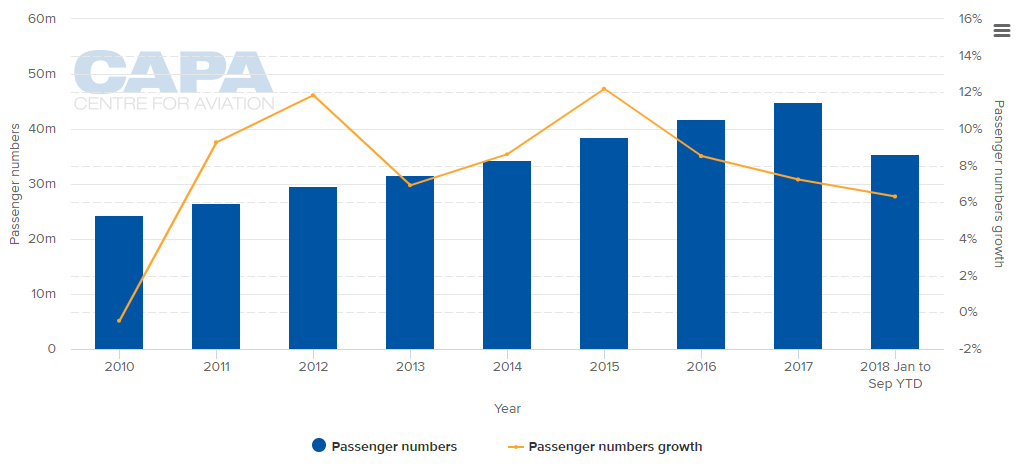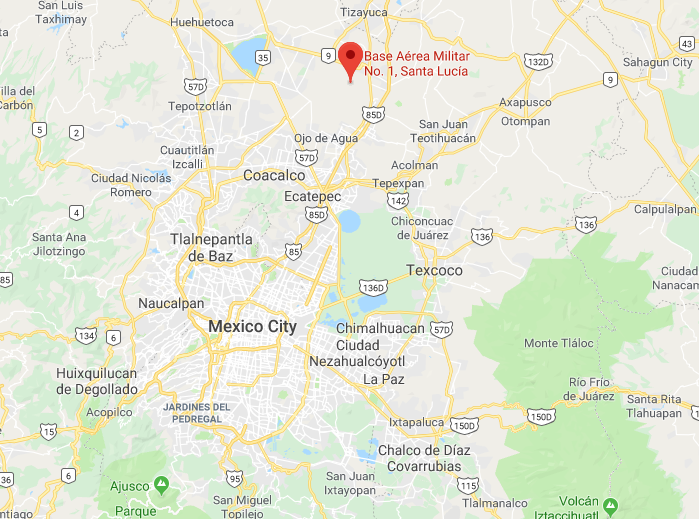Summary:
- The already partly constructed New Mexico City Airport project will be cancelled by the country's incoming President following a referendum;
- 70% of those who voted were against the USD13.3 billion New Mexico City Airport, but just 1.2% of registered voters turned out for the referendum;
- The alternative involves "expanding" the congested main airport, utilising a military base and bringing a previously rejected third airport back into play;
- There are concerns the anti-new infrastructure distaste could spread south from Mexico into Brazil.
It comes as no great surprise. Mr Obrador, who prefers to be known by his initials, AMLO, was never keen on the project during the election campaign and called for its abandonment as a matter of policy right from the start, in favour of expanding the existing main airport, Benito Juárez International, and, later, adding runways to a military facility at Santa Lucía.
He has always preferred to meet social needs instead and despite the fact that around one third of the construction work is already complete at a cost of USD5 billion that still leaves USD8 billion in the coffers for social purposes, less the USD1 billion or so it would probably take to make some cosmetic improvements to the Juárez airport and to add the runways at Santa Lucía. Latterly, AMLO has also talked, rather belatedly, about "reactivating" Toluca Airport, an under-utilised facility which is partly privately concessioned.
Questions have immediately been raised about the referendum and was it justifiable? There are questions that the subject was too technical for most people to understand, concerns over the vote and the matter that only 1.2% of registered voters turned out, which actually suggests that the issue is not really at the top of most peoples' concerns.
Regardless of those concerns, a decision has been made, but what does that really mean? A great deal of work will be required to make Juárez Airport, Latin America's busiest, serviceable. It was bursting at the seams before the decision was made to build the new one and its further expansion had been ruled out on many occasions.
CHART - The rate of passenger growth at Mexico City Juarez International Airport has slowed since 2015,mainly due to capacity issues Source: CAPA - Centre for Aviation and Mexico City Juarez International Airport reports
Source: CAPA - Centre for Aviation and Mexico City Juarez International Airport reports
The Santa Lucía airbase is around 30 km (19 miles) north of Mexico City, not a great distance but further out than the new airport (near Texcoco on the map) would have been. There remains a big question over how will military operations overlap? Then there is the question of public transport accessibility there and of existing infrastructure. It would not merely be a case of adding runways and aprons, terminal and support infrastructure would also be needed.
MAP - Santa Lucía airbase is around 30 km (19 miles) north of Mexico City, not a great distance but further out than the new airport (near Texcoco) would have been Source: Google Maps
Source: Google Maps
While some military airports have been successfully converted to commercial status by using some of the already-constructed infrastructure (good examples from Europe are Frankfurt Hahn in Germany and Doncaster-Sheffield in the UK) these are small airports handling from one to four million passengers per annum. Presumably Mexico City's solution would be on a much larger scale?
If there is a potential winner out of this it could be Toluca Airport, which is a rare example of a Mexican airport that is not wholly owned by the state but not privatised either to any of the three main groups, ASUR, OMA and GAP. It is about 65km (40 miles to the southwest of Mexico City and it has its own distinct catchment area.
The expansion of Toluca was identified as a possible solution to Mexico City's congestion problem by organisations such as IATA prior to the new airport decision and several consulting exercises took place. It has some problems, but it also has the longest runway in the country.
Another issue is how Mexico City can act as a regional hub for Latin America if its traffic is spread between two or three airports. Moreover, whether investors will ever again trust the government there. IATA has called AMLO's decision "extremely disappointing," and it and other organisations most worry whether his distaste for new airport infrastructure could spread to Brazil under the new right wing President there, Jair Bolsonaro.